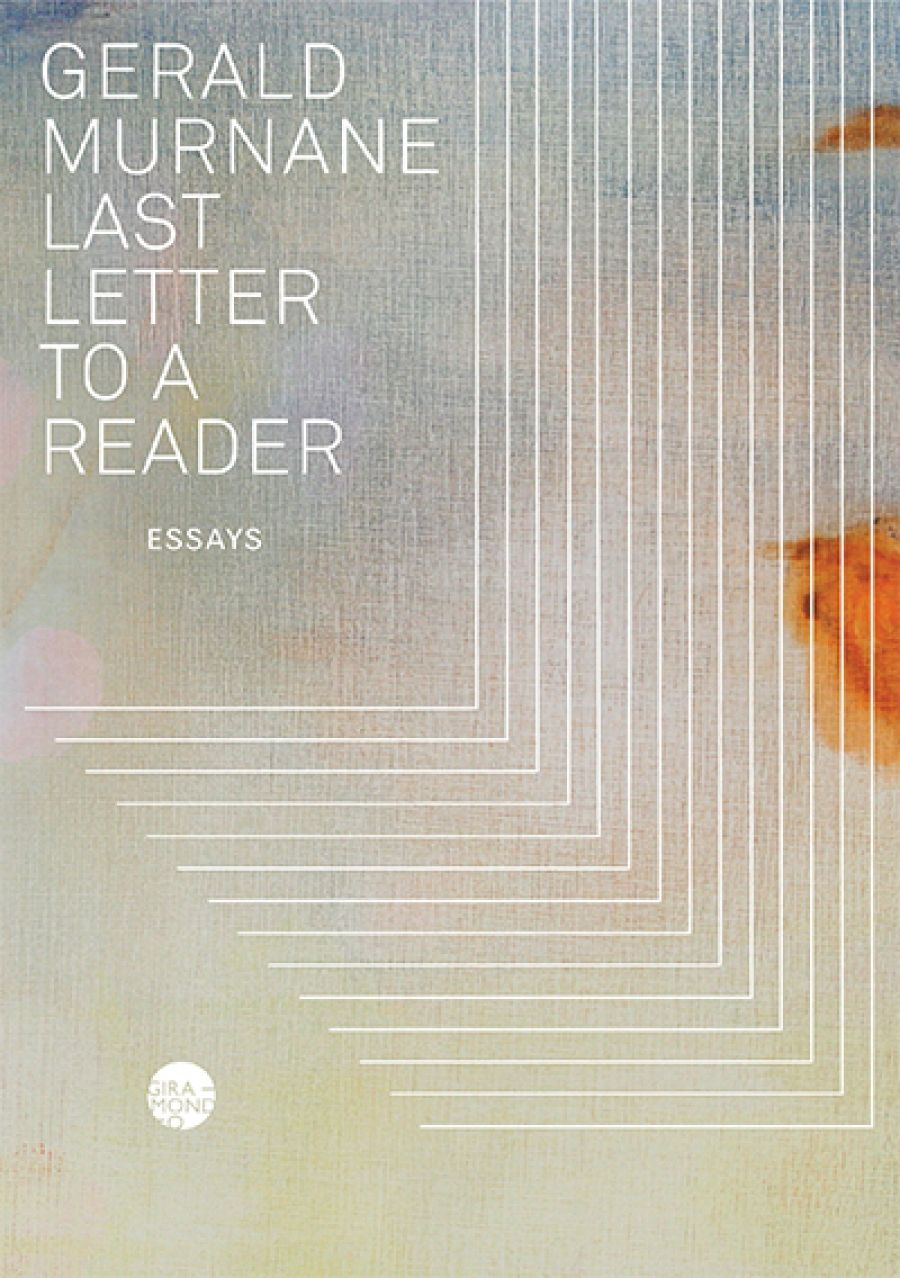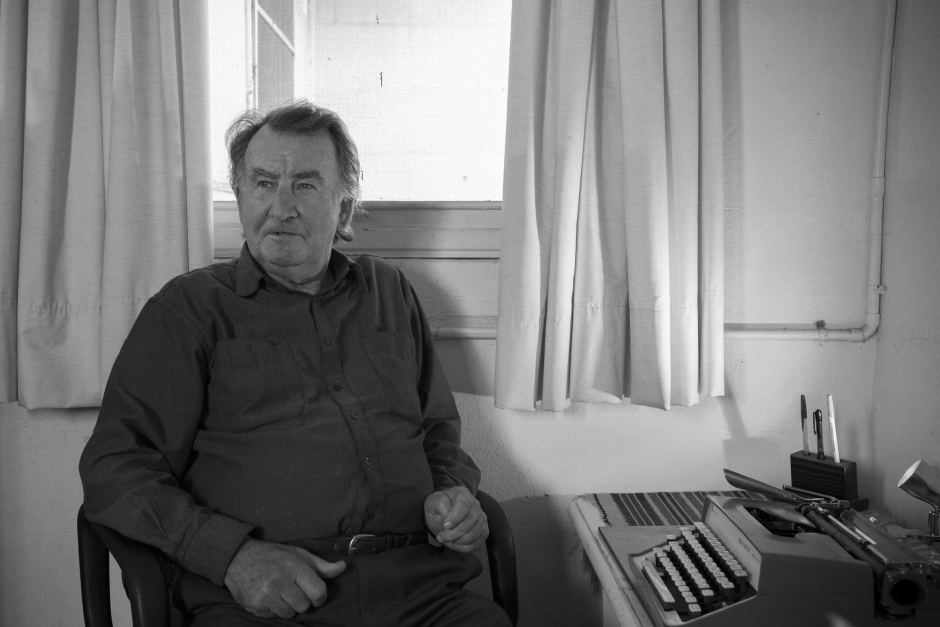
- Free Article: No
- Contents Category: Essay Collection
- Review Article: Yes
- Article Title: The necromancy of solipsism
- Article Subtitle: Gerald Murnane’s shameless aesthetic privacies
- Online Only: No
- Custom Highlight Text:
No contemporary Australian writer has higher claims to immortality than Gerald Murnane and none exhibits narrower tonal range. It’s a long time since we encountered the boy with his marbles and his liturgical colours in some Bendigo of the mind’s dreaming in Tamarisk Row (1974). There was the girl who was the embodiment of dreaming in A Lifetime on Clouds (1976). After The Plains (1982) came the high, classic Murnane with his endless talk of landscapes and women and grasslands, like a private language of longing and sorrow and contemplation.
- Article Hero Image (920px wide):

- Article Hero Image Caption: Gerald Murnane (photograph by Ben Denham/Giramondo)
- Alt Tag (Article Hero Image): Gerald Murnane (photograph by Ben Denham/Giramondo)
- Featured Image (400px * 250px):

- Alt Tag (Featured Image): Peter Craven reviews 'Last Letter to a Reader: Essays' by Gerald Murnane
- Book 1 Title: Last Letter to a Reader
- Book 1 Subtitle: Essays
- Book 1 Biblio: Giramondo, $26.95 pb, 126 pp
- Book 1 Readings Link: booktopia.kh4ffx.net/EaRa12
What has never been in doubt through all these haunted, burnished masterpieces – Landscape with Landscape (1985), with its complexly interconnected narrative, and Inland (1988), which Murnane has described as a God-given book – was the authority of the prose, which is forever itself and forever modulating the shadows and shades of what’s possible. If Murnane is the kind of writer who drives you spare, if he makes you think that a fellow bush modernist like Murray Bail is crowded with Tolstoyan colour and incident by comparison, then you will be reacting the way Edward Said reacted to Wallace Stevens when he said he was like an orchestra warming up but never getting going. Murnane does provoke that level of impatience. At the same time, Inland is manifestly the work of a master, as fine a piece of fiction in something like the lyrical mode as this country has ever produced.
Yet if you ask yourself what Inland is about, you’re likely to be stumped. Yes, this is the echoic Wuthering Heights book; and yes, it has a glow to which the other works have an enriching and reflective family resemblance, but – my God – interpretation anybody? Well, Murnane in his retirement has been brooding on his books, more or less privately, more or less self-delectatingly, and here he is on Inland. A critic he appreciated sent him an interpretation of the book that Murnane disagreed with:
I prepared to send in return a clear explanation of a text so often misunderstood. I had not gone far when I found myself confused and struggling for words. When I came to explain how the text appeared to have several narrators but was in fact narrated by the one personage, I found myself defeated.
Last Letter to a Reader, written by Murnane for himself and his archives, is only in print through the interventionist good offices of Ivor Indyk of Giramondo. It is essentially a collection of near privacies in which Murnane, in his Victorian retreat at the edge of South Australia, talks to himself about the reflections of the images and obsessions that constitute his apprehension of his work. Quite weirdly, the book flares into something other than self-reflexive life when Murnane gives us, complete with the original Magyar in which it was composed, plus the musical notation, this poem in English prose translation:
Save me, Angel-of-mine; my frail body is afraid; a painful death is coming fast. I know what awaits me afterwards: true knowledge, endless plains, and eternal magic. But I’m human. I was created from flesh, which wants to stay close to soul. Help me, dear one, to endure patiently my going back to my own sort of heaven.
That has a haunting and unearthly poignancy we have come to cherish somewhere beyond the mannerisms of Gerald Murnane, however cognate with them they must be.
Elsewhere, we get what we have come to expect in a state of some disarray. He talks of the ‘near-to-truthful text … of what Proust’s narrator calls the-book-in-one’s-heart’ – and then he tells you what string of words drove him to learn Hungarian and the compositional impulse behind the obsessive drive. After which we get the invocation of ‘the personage called by Proust “le moi profond ”’. Then he says it’s ‘the best possible name for the part of me most responsible for my fiction’.
‘Personage’ is a crucial and loaded term here, because, as Murnane makes clear elsewhere, he is invoking a higher form of being – the angels and saints of Catholic devotion, even the three persons of the Trinity. All of this will keep Murnane’s biographer and his foot-soldiers busy, though it’s notable in this collection that the jokes are gone. Murnane used to tell the story of how he would travel to work on the tram from Malvern in 1961 with a volume of C.K. Scott Moncrieff’s twelve-volume translation of Proust neatly wrapped in a brown-paper cover. Only later did he reflect that his fellow travellers must have thought him a total moron for taking so long to read a slim book. No, all we get, in an interesting variation, is ‘a brownish coloured paperback edition of Swann’s Way’.
Murnane says, over and over, as he told his students at Deakin University, ‘my sort of writer looks not outwards but inwards for subject-matter’. Sometimes this book will suddenly instantiate both the power and the glory of this endeavour.
I had knelt often, ten or twelve years before, on the threadbare rug in a rented weatherboard cottage in Bendigo, pushing glass marbles around a pretend-racecourse and seeing the pretend-landscape around the course merge into a landscape brought to mind by the hot gusts outside the house of the wind from the plains to the North, where I had never been.
You can hear the prose begin to insinuate some revelation of the order of things through its cadence and rhythm, and the recollection of Tamarisk Row is no inhibition to the epiphany that is by implication disclosed.
It’s good, too, to have Murnane enunciate his characteristic effects. He talks about his compound sentences and ‘the prevalence in school curricula of the Latin language, in which the main verb is the last word in most sentences’ and the way he will read Victorians like Hardy for their sonority and the measured rhythms of their clause after clause. This is instructive and makes plainer sense than his intimations about how ‘I value most the vowel-sound of the word Kút.’ Murnane knows perfectly well that all his rhapsodic muttering about what he gets from the Hungarian language and the intensity of his emotion about a few lines depicting the image from People of the Puszta of a girl, her nose uplifted haughtily even after death, will come across as an ‘impossible journey … delusional, literal-minded’. But he is undeterred.
Something similar is true of all the talk about personages. The Gerald Murnane of these excursions into the deeper erotics of his own mythography is fascinating but weird beyond belief. And there is the strangest frisson when he invokes Catherine Earnshaw as one of his personages together with Emily Brontë herself and the way the Brontës’ private worlds could become commingled with Murnane’s sacramental sense of horse racing. But it is all a kind of necromancy of solipsism.
Has any writer ever paraded his aesthetic privacies so shamelessly? It doesn’t matter. These are the ravings of a genius. Ignore them if you dare, literature-besotted unraveller.


Comments powered by CComment